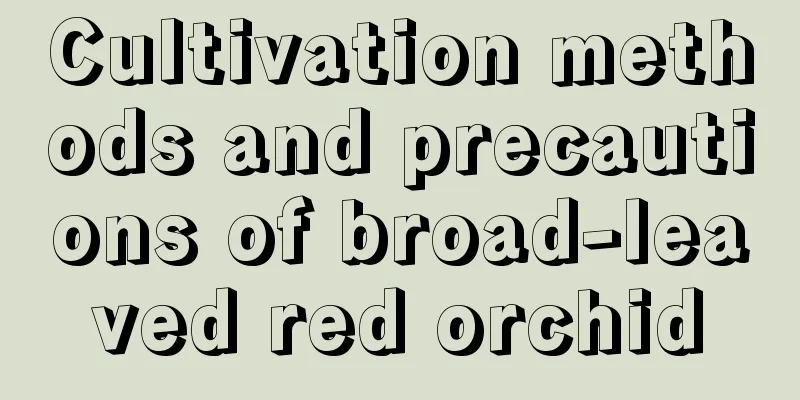Cultivation methods and precautions of Daphne koreana

1. SoilThe best potting soil for Daphne odora is fertile, acidic leaf mold with a high humus content. Alkaline soil must not be used. It can be mixed in a ratio of 5:2: mountain soil (garden soil): leaf mold (pine needle soil) as potting soil. 2. WateringThe roots of Daphne koreana are fleshy, so be careful to water it less often and never too much. If you water too much, the soil in the pot will remain moist for a long time, which can easily cause root rot. After the rain, pour out the accumulated water in the basin in time. After the frost, the water content of the potting soil should be controlled at around 45%. 3. FertilizationFirst of all, apply enough base fertilizer in winter. In spring, you should apply 2 to 3 thin layers of cake fertilizer, and make sure it is well decomposed. Stop fertilizing in summer to avoid burning the roots. Apply thin fertilizer frequently in autumn until flowering. After the flower buds form, you can spray the branches and leaves with potassium dihydrogen phosphate. In general, it likes fertilizer more. It is best to apply liquid fertilizer once every 10 days during the growing period. Note that the concentration of the liquid fertilizer should be low. In addition, be careful not to use human feces and urine as fertilizer. 4. LightingDaphne prefers a semi-shaded environment and cannot be exposed to the scorching sun. However, the temperature is lower in winter and spring, so it should be placed in a bright environment. In summer, it should be placed in a well-ventilated and shaded place, and sprayed with water appropriately when it is too hot. 5. Notes1. PruningThis plant is relatively resistant to pruning, and the denser branches can be pruned off before germination to facilitate ventilation and light transmission. Pruning it after flowering can maintain its beautiful flower shape. You can shorten the branches where the dead flowers are located, and cut off the overgrown branches, crossed branches, overly dense branches, overlapping branches and other branches that affect the beauty of the tree shape. 2. RepottingRepotting is usually done after the flowers fade, usually every 2-3 years. When repotting, you can remove about 2/3 of the old soil, or you can replace all the old soil with new soil. When repotting, you can cut off some roots that are too long and lift the roots appropriately. |
<<: Peony cultivation methods and precautions
>>: Hibiscus cultivation methods and precautions
Recommend
Disease and insect pest control of Lipia orchid
Sheath Rust Leaves infected with this disease usu...
How to water ivy
Ivy watering tips Ivy is a plant of the genus Hed...
What kind of lapins cherries are
1. What kind of cherry is lapins? Lapins cherries...
Banana Origin, Banana Varieties
1. Banana Origin Origin: Bananas were first grown...
How to prune golden bell flowers and the precautions
When is the best time to prune golden bell flower...
Cherry likes shade or sunlight
Do cherries prefer shade or sun? Cherry is a sun-...
How to maintain the lucky fruit bonsai and what to pay attention to
Feng Shui meaning of auspicious fruit bonsai The ...
He grew the sunflowers into old trees, and his neighbors were envious!
What does an old sunflower stump look like? How t...
When does the viburnum bloom?
When does it bloom? When is the flowering period ...
Can leaves be used as fertilizer?
Leaves as fertilizer Leaves can be used as fertil...
Black-skinned and yellow-skinned fruit varieties and characteristics
1. Family Black-skinned yellow-skinned fruit is a...
Cultivation Techniques of Pomegranate Bonsai
How to make a pomegranate bonsai 1. When choosing...
What kind of plant is Yimoxiang and what does it look like?
1. What plants A touch of fragrance, also known a...
Cultivation methods and precautions of Schefflera variegated
1. The habit of this plant (1) First of all, it l...
What plants and flowers are suitable for dwarfing (how to use and dosage of plant dwarfing)
The role of phytochloroquine Chlormequat is a ver...









